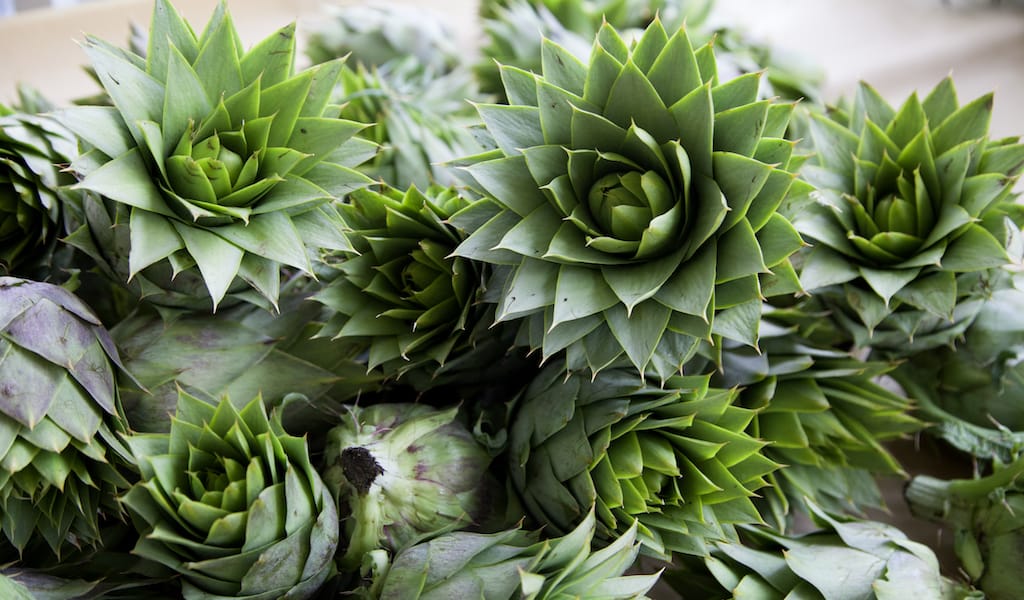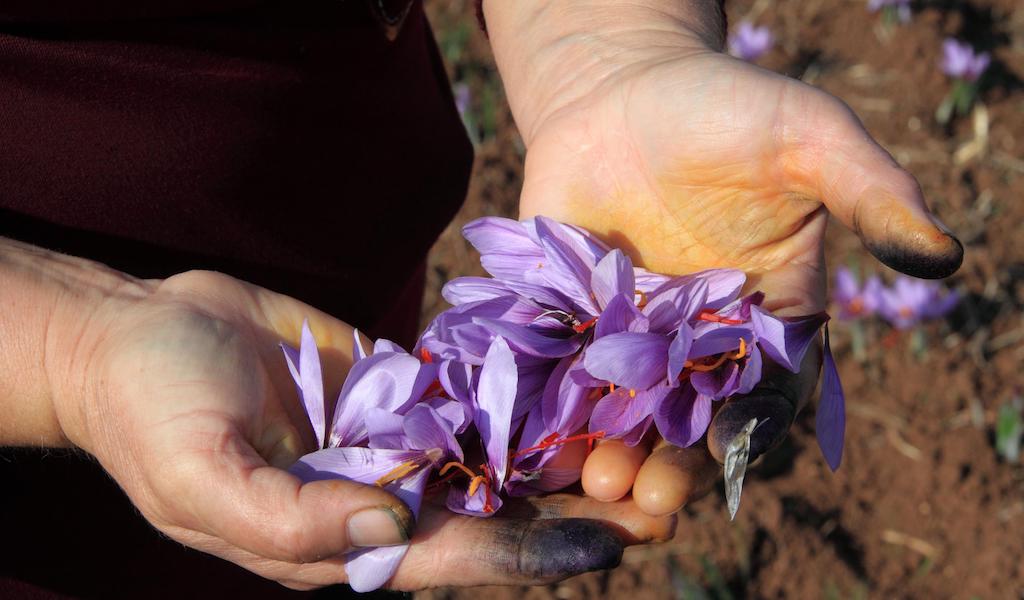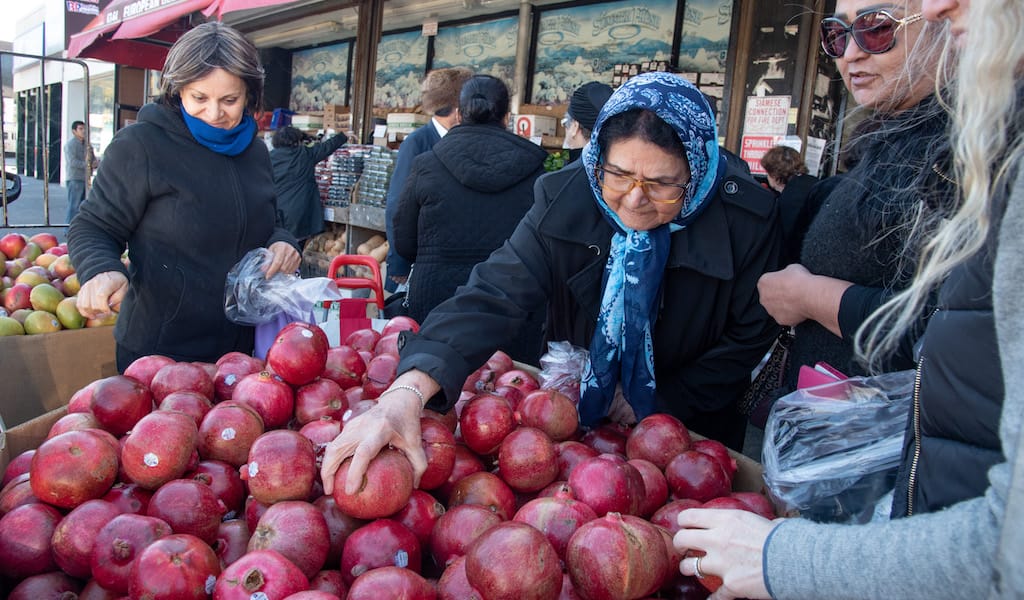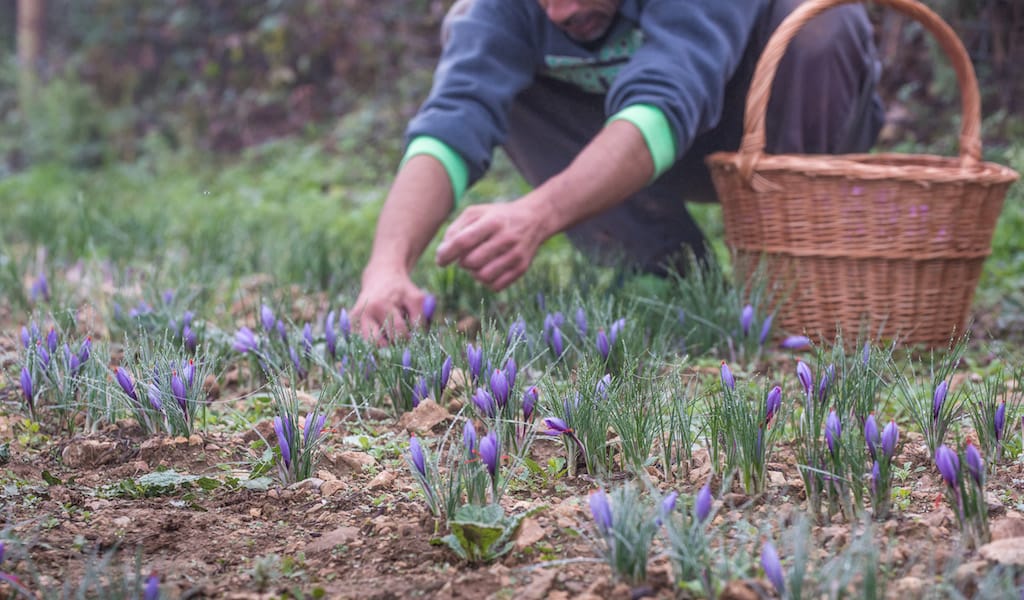Springtime in Greece brings an abundance of fresh produce. Local farmers’ markets erupt with joy at this time of year – in addition to the cheerful vegetables, herbs and beloved wild greens from different regions, the farmers (already sunburnt) shout out to customers with voices that show a clear pride in their harvest.
Perhaps our favorite spring crop is the artichoke, a vegetable (technically a flower) that has been widely consumed by the Greeks since antiquity. The artichoke plant doesn’t usually grow over a meter high, and the most scrumptious part is the unopened bud (when it does bloom, the bud grows into a beautiful purple flower resembling a milk thistle).
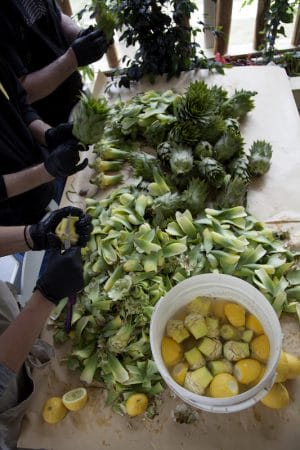 The outer leaves are boiled and eaten as a meze dressed in olive oil and lemon juice and the heart can be eaten raw with olive oil and plenty of lemon juice, or cooked in various ways: pickled, steamed, baked, fried and grilled. At peak freshness, the artichoke’s stem is also edible (both raw and cooked), and around this time you’ll often find artichokes in the market with a good portion of their stems still attached.
The outer leaves are boiled and eaten as a meze dressed in olive oil and lemon juice and the heart can be eaten raw with olive oil and plenty of lemon juice, or cooked in various ways: pickled, steamed, baked, fried and grilled. At peak freshness, the artichoke’s stem is also edible (both raw and cooked), and around this time you’ll often find artichokes in the market with a good portion of their stems still attached.
In addition to being one of the main vegetables consumed in ancient Greece, it was also used as medicine, first to treat digestive issues and later on to help with jaundice and liver conditions (drinking a tea made from boiled artichoke stems is said to be particularly beneficial for the liver). Very nutritious and rich in vitamins A, B1, B2, C, calcium, and phosphorus, artichokes are still used today to treat or prevent several conditions including high cholesterol and heart disease.
But not all artichokes are created equal. Wild artichokes, most prominently marked by the thorns on their stems and leaves and their beautiful large, grayish leaves, are loaded with more health benefits and, perhaps more importantly, are tastier than their cultivated counterparts. (Also called a cardoon, the wild artichoke is, botanically speaking, a close relative of the cultivated globe artichoke – it’s generally believed that they are both varieties of the cynara cardunculus species.) There are fewer of these wild artichokes out there, making them more of a rarity.
When we can, we always try to buy artichokes, both cultivated and wild, originating on the large Cycladic island of Tinos, which has a long history of agriculture despite the fact that it’s usually short on water – the mineral-rich soil makes certain parts of the island incredibly fertile. As Yiannis Petropoulos, a local producer of both regular and wild artichokes, told us, Tinos’ microclimate and sandy-clayish soil are so suitable for artichokes that nothing, not even massive water shortages, can stand in their way. (In his mind, the bigger problem is that the number of knowledgeable producers is steadily decreasing as most islanders choose to work in the more profitable tourism industry.)
Locals actually refer to the wild artichoke as “the Porsche of artichokes,” which explains why many of them fail to ever make it off the island.
Tinos’ artichokes are not heavily watered, as most producers here believe that watering crops ensures their growth but weakens their flavor, making them more metallic tasting. So local farmers tend to inure their artichokes to the microclimate hardships, mainly the strong sun and wind as well as the lack of water, “training” them through local irrigation techniques to form strong roots, get their nutrients from the soil and rely on rain in order to survive. This makes them often smaller in size, firmer but oh so delicious and with a mineral flavor.
The area around Komi village is famous nationwide for their artichokes. Every year around 600,000 cultivated artichokes are grown in the area, most of which are shipped to Athens. In Komi and the areas surrounding the village of Kabos, which is where most of the larger artichoke farms are located, producers have solved the water shortage problem by drilling deep into the ground.
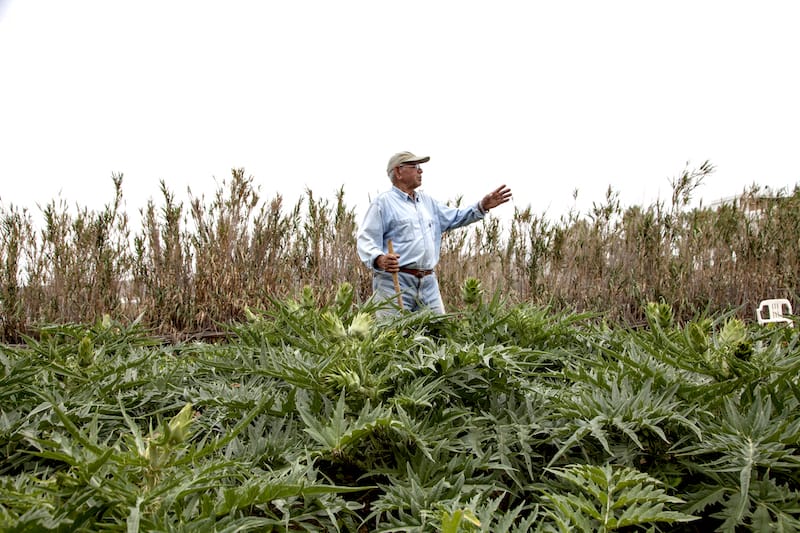
Even heartier are the thorny wild artichokes on Tinos – most are not watered at all, unless it’s a particularly dry year. Their deep roots allow them to tap into the groundwater, which can often be located quite deep below the surface. These wild artichoke plants are found all over the island, some growing in a truly ‘free-range’ fashion while others are ‘semi-wild,’ i.e. planted by producers. Like the globe artichokes, they are harvested starting in early February, although the main harvest takes place in March and April. Unlike their cultivated cousins, however, wild artichokes put up more of a fight – special gloves and large rain boots are needed to collect them because their thorns are so sharp.
Overall we find them to be more flavorful than those globe artichokes cultivated on the big farms. When fresh and tender, they can be eaten almost whole, leaves included (after the outer thorny leaves have been removed). Locals actually refer to the wild artichoke as “the Porsche of artichokes,” which explains why many of them fail to ever make it off the island. (Although it should be noted that almost all of the wild artichokes grown by Favianos Rougeris, one of the largest organic producers on the island, are shipped to Athens to be sold at organic farmers’ markets.)
One of the best places on the island to try wild artichokes is Marathia in Agios Fokas. Chef and owner Marinos Souranis, who grew up on Tinos, is a big fan of wild artichokes, which he sources from his uncle Konstantinos Souranis, who has dedicated his life to the production and harvesting of wild artichokes, and Maria Livadaris and her father Nikos, well-known wild artichoke producers in Falatados village.
Having cooked with wild artichokes for years, Souranis now experiments with modern preparations at the restaurant in an attempt to retain most of the strong flavor of these artichokes as opposed to “cooking it off.” Recently he has been cooking the artichokes sous vide for just eight minutes and then finishing them off in various ways. We were lucky to try his baked wild artichokes with fresh red mullet – after the sous-vide treatment, he then gently bakes the artichokes whole in a charcoal-burning oven. At the table we dressed the dish with a little olive oil mixed with lemon juice and hesitated – the little artichokes looked like such delicate flowers that we almost felt guilty stabbing them with a fork and chowing down. But that first bite was so heavenly and unlike anything we had tasted before that we quickly devoured the whole plate.
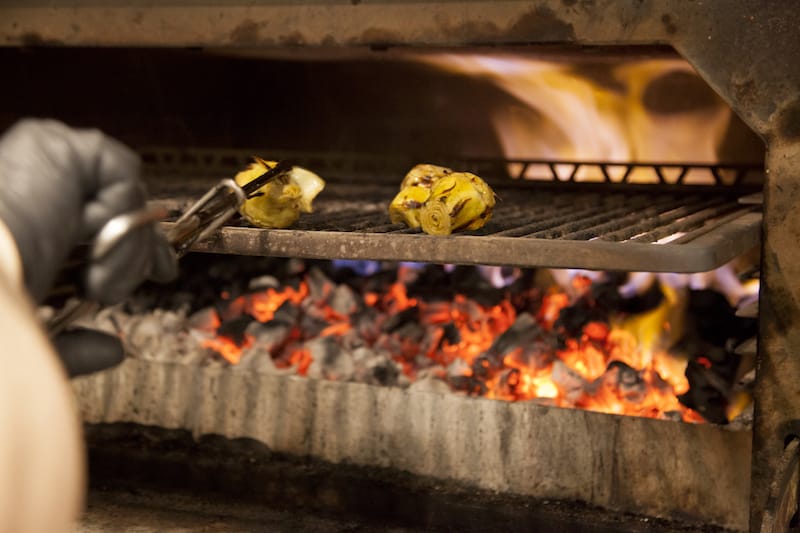
To taste the whole spectrum of Tinos’ artichoke dishes, head to the island’s annual artichoke festival, usually held in the last week of May or the first week June (the date has not been set for this year’s festival). For the past 12 years, locals from the village of Komi have been organizing the daylong event. Over the course of the day, villagers (mostly women) cook around 10,000 artichokes provided by local producers. You are guaranteed to find some of the island’s most famous artichoke dishes here: artichoke hearts preserved in olive oil, vinegar or brine; artichoke pâté; artichoke pie (layers of bread, artichoke and local cheese with chopped onions and fresh herbs); artichokes stuffed with minced beef or tuna; artichokes a la polita (artichoke hearts cooked with potatoes, carrots, onions, plenty of dill or fennel, with olive oil and lemon juice); fried artichokes and more. The vegetable even finds its way into desserts, with our favorite being the artichoke spoon sweet served over yogurt.
If you’re craving even more artichokes at the end of your meal, stop by Christos Fonsos’ winery in Komi to taste an artichoke digestive. A winemaker for over 20 years, Fonsos got his spirit-making license a few years ago in order to produce old traditional liqueurs that local women used to prepare at home by adding fruit, nuts or even flowers to stromflia (στρομφλιά), a spirit distilled from local grapes. The artichoke liqueur is made by steeping small chunks of carefully cleaned artichoke in stromflia with sugar and his secret spice blend for around 20 days. It’s particularly pleasant when served over crushed ice.
And if you can’t make it to Tinos in time to taste the fresh artichokes this spring, you can always pick up preserved Tinos artichokes year-round at specialized delis in Athens, like To Pantopolio tis Mesogiakis Diatrofis. There you’ll find different artichoke delicacies made by Ap’ to Doulapi tis Giagias (From Grandma’s Cabinet), a small family business based in Ktikado village in Tinos. Run by three generations of women and using old family recipes, the business produces a wide range of products, including artichoke hearts in oil, artichoke paste, sundried tomato and artichoke paste, and artichoke garlic salad.
Editor’s note: To celebrate the arrival of spring this year, we’re looking at seasonal produce and products that are a bit surprising.
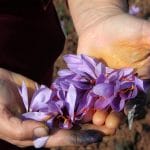 October 6, 2023 Harvest Week
October 6, 2023 Harvest Week
Let us begin with a little Greek mythology. Hermes – son of Zeus, god of thieves and […] Posted in Athens October 4, 2023 Harvest Week
October 4, 2023 Harvest Week
Home to countless immigrant stories, Queens is the most diverse borough in New York […] Posted in Queens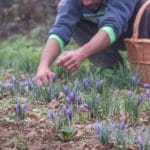 October 3, 2023 Harvest Week
October 3, 2023 Harvest Week
Saffron may be most commonly associated with Iran, currently the world’s largest […] Posted in Barcelona
Published on April 23, 2018
Related stories
October 6, 2023
Athens | By Ilias Fountoulis
AthensLet us begin with a little Greek mythology. Hermes – son of Zeus, god of thieves and commerce and messenger of Olympus – and Krokos, a mortal youth, were best friends. One day, while the two friends were practicing their discus throwing, Hermes accidentally hit Crocus on the head and wounded him fatally. On the…
October 4, 2023
Queens | By Melanie Einzig
QueensHome to countless immigrant stories, Queens is the most diverse borough in New York City, with over two million people, half of whom were born outside the United States. So it’s no surprise that the area’s markets – some sprawling, many more pocket-sized – are equally as diverse, serving immigrant communities both old and new. We…
October 3, 2023
BarcelonaSaffron may be most commonly associated with Iran, currently the world’s largest producer of this costliest of spices, but it has a long and storied history across the Mediterranean, particularly in Spain. Once an important saffron producer and trading center, Catalonia has seen a resurgence in saffron cultivation in recent years. The spice, which comes…







































